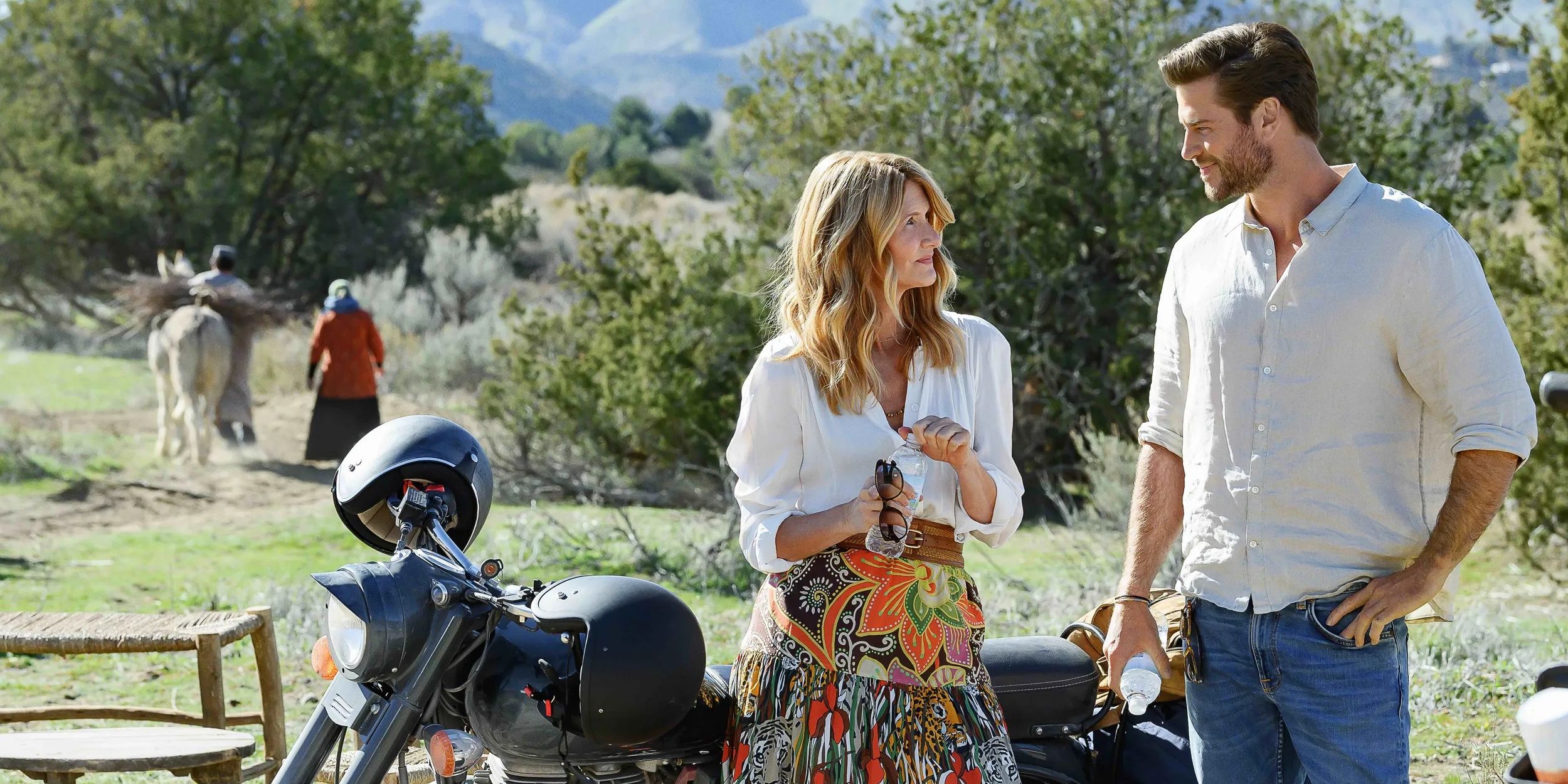Sometimes, a story on screen can make you feel something really deep, something that stays with you long after the credits roll. When we talk about a "lonely planet film," we are, in a way, thinking about movies that show us places far away, perhaps even places that feel a little bit empty, yet are full of human feeling. These are the kinds of pictures that explore what it means to be by yourself, or to feel a sense of longing, often against a big, open backdrop.
You see, there's a real difference between just being alone and feeling lonely, isn't there? One is simply a situation, like being the only person in a quiet room, or on a vast, empty road. The other, however, is a feeling, a deep emotional response to that situation, or to life's circumstances more generally. A film that truly captures the spirit of a "lonely planet film" often helps us tell these two experiences apart, showing us characters who might be on their own, but not necessarily sad about it, or those who are surrounded by people yet still carry a quiet ache inside.
So, as we think about these kinds of stories, we are really looking at how movies can show us the many different sides of human experience, especially when it comes to being on our own. It's about the quiet moments, the vast landscapes, and the subtle ways people connect, or sometimes, don't. These films, you know, they invite us to look a little closer at the spaces between people and the feelings that fill them.
Table of Contents
- Solitude or Loneliness: What Does a Lonely Planet Film Show?
- How Does Music Shape the Mood in a Lonely Planet Film?
- Can Literature Inspire the Visuals of a Lonely Planet Film?
- What Kind of Places Become Characters in a Lonely Planet Film?
Solitude or Loneliness: What Does a Lonely Planet Film Show?
A person can be alone without feeling lonely, since alone describes a state of being and lonely describes an emotional response to one’s circumstances. This idea is, you know, pretty central to understanding many stories that might fit the description of a "lonely planet film." Consider someone traveling by themselves through a wide-open desert. They are, quite clearly, alone. Yet, their face might show a deep sense of peace, a quiet contentment with their surroundings. This kind of film would show us that being physically separate from others does not always mean feeling sad or isolated.
On the other hand, a "lonely planet film" could just as easily show us someone in a crowded city, surrounded by many people, yet feeling a profound sense of loneliness. This is the kind of situation where the emotional response is quite strong, even when the physical state is not one of being by oneself. The film might use close-ups, or perhaps show the character’s distant gaze, to let us feel their inner world. It's almost as if the film itself becomes a way to explore these very different inner states, letting us see the subtle signs that separate one from the other, in a way.
So, a good "lonely planet film" doesn't just show a person by themselves. It actually explores the deeper feelings that come with that. It asks us to look at whether the character feels a sense of quiet freedom, or a deep yearning for connection. This distinction, you know, it helps us appreciate the story on a much deeper level, making the film a lot more meaningful than it would be otherwise. It's about the character's heart, not just their location.
The Feeling of Being Alone in a Lonely Planet Film
The feeling of being alone, especially as shown in a "lonely planet film," can take on many shades. It might be a choice, a deliberate stepping away from the noise of daily life to find a sense of quiet. Think of someone walking along a deserted beach, the sound of the waves providing a gentle rhythm. They are alone, yes, but there's a calm about them, a peacefulness that suggests this is exactly where they want to be. This kind of scene, very often, speaks to a desire for introspection, for a moment to just be.
Then there's the kind of aloneness that feels a bit more like a burden, or perhaps a challenge. A character might find themselves stranded, or simply lost, in a vast, unfamiliar place. Here, the aloneness isn't chosen, but rather a circumstance that needs to be faced. The "lonely planet film" might show us their struggle, their quiet determination, or even their small moments of despair. It's about how they cope, or don't, with being truly isolated, you know, without another soul nearby.
These depictions of being alone, whether peaceful or challenging, help us understand the human spirit in its quieter moments. A "lonely planet film" has a way of letting us sit with these characters, observing their inner lives without much dialogue, allowing the visuals and the atmosphere to tell the story. It's a very powerful way to communicate feelings that are often hard to put into words, isn't that true?
How Does Music Shape the Mood in a Lonely Planet Film?
Music, quite often, plays a really big part in setting the mood for any film, and this is especially true for a "lonely planet film." Think about a song like 杨胖雨's "没有理由" and that line, "I am sorry I am so lonely." That phrase, you know, it just grabs your attention, doesn't it? In a movie that explores feelings of solitude or longing, a piece of music with such raw emotion can really make a scene hit home. It helps us feel what the character is feeling, even if they don't say a word.
Then there's the experience of live music, like going to a 惘闻 (Wang Wen) concert. Someone mentioned feeling a sense of release at their show, from the "黄泉水绝望的开始" (the desperate beginning of Yellow Spring Water) to the end with "Lonely God." The way the music built, how the front part of the song just made a person want to stand up, and the bright lights above – these are all elements that could be translated into a "lonely planet film." The soundtrack could build from quiet despair to a powerful, freeing moment, reflecting a character's inner journey, or perhaps their very, very personal experience.
Consider too, the song "Viva la Vida" by Coldplay. It was written by Guy Berryman, Jonathan Buckland, William Champion, and Chris Martin, and produced by Markus Dravs and Brian Eno. The title itself, "long live life," suggests a kind of resilience, even joy, that can exist alongside moments of quiet contemplation. A "lonely planet film" might use such a song to show a character's unexpected strength or a moment of quiet triumph after a period of hardship. Music, basically, becomes a character in itself, shaping our feelings about the story.
The Soundscapes of a Lonely Planet Film
The soundscapes in a "lonely planet film" are, in some respects, just as important as the visuals. They can make us feel the vastness of an empty space, or the quiet hum of a distant town. The choice of music, like the songs we just talked about, can really pull us into the character's emotional world. Imagine a scene where a character is completely alone, and then a simple, moving melody begins to play. That melody can speak volumes about their internal state, perhaps a feeling of deep reflection or a quiet sadness.
And let's not forget the origins of so much modern music. Blues, for instance, is basically the parent of nearly all these other music forms. It grew out of the work songs of African Americans, and it blended with styles like country and gospel, with that call-and-response pattern coming from church music. This kind of raw, deeply human music, with its roots in struggle and expression, could provide the very, very emotional backbone for a "lonely planet film." It could evoke a sense of shared human experience, even when a character is by themselves.
So, whether it's a soaring orchestral piece, a quiet acoustic guitar, or a powerful vocal, the music in a "lonely planet film" does more than just fill the silence. It shapes our feelings, it hints at what's going on inside the characters, and it adds so much richness to the story. It helps us feel the quiet moments, and the louder ones too, in a very personal way, you know.
Can Literature Inspire the Visuals of a Lonely Planet Film?
Literature, quite often, provides a deep well of inspiration for filmmakers, and this is certainly true for a "lonely planet film." Take Jorge Luis Borges's "I offer you lean streets, desperate sunsets, the moon of the jagged suburbs." These words paint such a clear picture, don't they? A film could take these very images and bring them to life, showing us streets that feel empty and worn, sunsets that are beautiful but also carry a hint of sadness, and a moon hanging over parts of a city that are a bit broken down. This kind of visual storytelling, you know, it speaks to a certain kind of quiet beauty found in forgotten places.
And then there's the quote, translated by Han Han, from the book "Flipped": "Some of us get dipped in flat, some in. Someone lives in a tall building, someone in a deep ditch. Someone shines with light, someone is covered in embroidery. There are thousands of kinds of people in the world, do not seek floating clouds. If this person is like a rainbow, you will know when you meet them." This passage, basically, talks about the different paths people take in life, and the idea that some connections are just meant to be. A "lonely planet film" could use this idea to show characters on their own paths, perhaps feeling a little lost, until they find a moment of true understanding or connection, even if it's just with themselves.
These literary ideas, they give a "lonely planet film" a kind of depth, a philosophical side that makes the story more than just pretty pictures. They help the film explore bigger questions about life, about where we fit in, and about the connections we seek, or sometimes, miss. It's a way of adding layers of meaning, you know, to the visual experience.
Visual Poetry in a Lonely Planet Film
Creating visual poetry in a "lonely planet film" means making every shot count, turning landscapes and objects into symbols of emotion. When Borges talks about "desperate sunsets," a film can show us a sky that is beautiful but also feels a little bit heavy, perhaps reflecting a character's inner turmoil. The "破败郊区的月亮" (dilapidated suburban moon) could be a recurring image, representing a quiet sense of decay or the overlooked beauty in ordinary, worn-out places. These visuals become, in a way, characters themselves, telling a story without words.
The idea from "Flipped" about people being "dipped in flat" or "shining with light" can also inspire how a "lonely planet film" shows its characters. It's about showing the contrasts in human experience, the moments of quiet struggle versus the moments of unexpected brightness. A character might start in a "deep ditch," visually speaking, but through their journey, they might find their own kind of light, perhaps a sense of inner peace or a new direction. This visual journey is very important, you know, for the story.
So, a "lonely planet film" often uses its visuals to speak to the heart. It’s about more than just showing a place; it’s about showing how that place makes a character feel, or how it shapes their journey. It's about finding beauty and meaning in quiet moments and vast spaces, making the film a truly immersive and thoughtful experience, you see.
What Kind of Places Become Characters in a Lonely Planet Film?
In a "lonely planet film," the places themselves often take on a life of their own, becoming almost like characters. These aren't always grand, famous spots. Sometimes, they are the "lean streets" Borges mentioned, the kind of ordinary places that feel a bit forgotten, yet hold so much quiet history. A film might linger on an empty street corner, or a weathered old building, letting the viewer feel the quiet presence of the location. These places, you know, they can tell a story just by being there.
Consider the idea of a "破败郊区的月亮" (dilapidated suburban moon). This isn't just a moon; it's a moon seen from a specific, somewhat neglected place. A "lonely planet film" might use such a setting to evoke a sense of quiet longing or a feeling of being on the edges of things. The light from that moon, or the shadows it casts, could become a visual metaphor for the character's internal state. It's a very subtle way to add depth to the story, isn't it?
These kinds of settings allow a "lonely planet film" to explore themes of isolation, introspection, and sometimes, unexpected discovery. The vastness of a desert, the quiet of a remote cabin, or the overlooked corners of a city – all these places can become central to the narrative, shaping the characters' experiences and emotions. They help us understand what it truly means to be alone, or to feel a certain way, in a particular setting.
Finding Connection in a Lonely Planet Film
Even in a "lonely planet film" that explores themes of solitude, there are often subtle hints of connection, or the search for it. It might not be a grand romance, but perhaps a fleeting moment of shared understanding with a stranger, or a quiet realization about one's place in the world. The film might show a character observing others from a distance, feeling a slight pull towards human warmth, even if they don't act on it. These small moments, you know, they really stand out.
The idea from "Flipped" about finding someone "like a rainbow" suggests that even when you are on your own, there's always the possibility of meeting someone who just fits, someone who makes the world a little brighter. A "lonely planet film" could explore this idea, showing a character who has been traveling alone for a long time, and then, quite unexpectedly, they encounter someone who sparks a small, quiet connection. It's about the hope that exists, even in the most solitary of journeys.
So, while a "lonely planet film" might focus on the experience of being by oneself, it also often explores the human need for connection, however small or brief. These films remind us that even when we are physically alone, our hearts often yearn for something more, for a shared moment, or a feeling of belonging. It's a very human thing, after all, to want to connect, even when we are far apart, you know.


